A
Auto Express
Guest
There were some big new car arrivals in 2020, but the only real way to find out if they went straight to the top of their classes was to challenge their credentials in a group test against the current best.
Here at Auto Express we perform a series of group tests each month - everything from city cars to supercars and SUVs to luxury cars - to find out the motors that should be top of your shopping list.
So if you're in the market for a new car, head over to our dedicated group test page. In the meantime, we've rounded up the best group tests that we performed during 2020.
Scroll down to read about the best group test we performed each month during 2020...
New Juke takes on front-running small SUVs
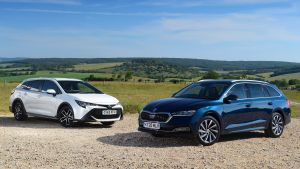
image
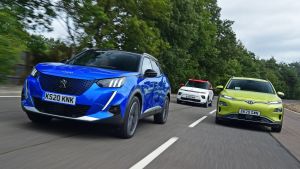
image
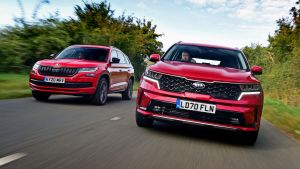
image
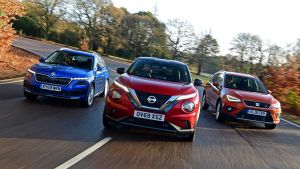
image
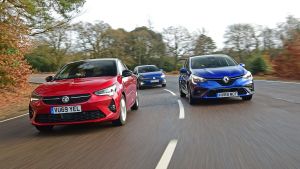
image
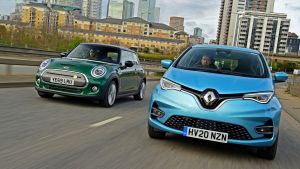
image
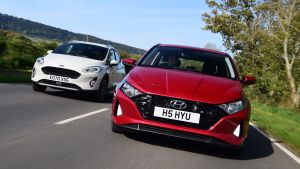
image
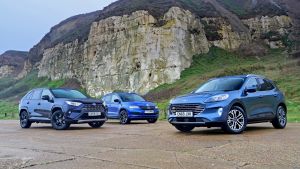
image
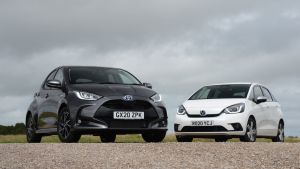
image
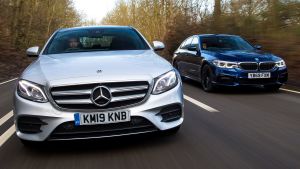
image
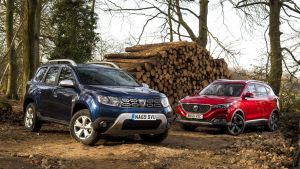
image
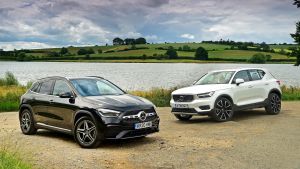
image
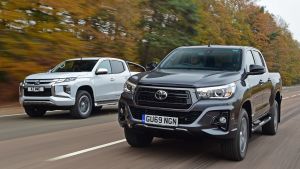
image
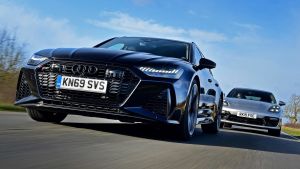
image
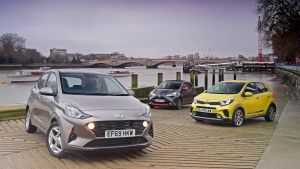
image
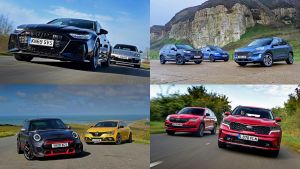
image
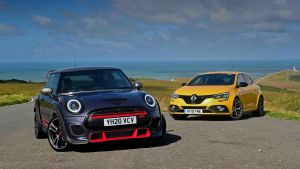
image
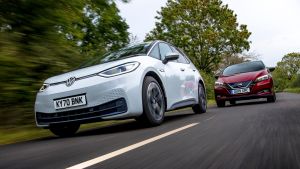
image

image

image
One of the new year’s first group tests was for the Nissan Juke, where the latest version of the Japanese brand’s segment-defining small SUV went up against the Skoda Kamiq and SEAT Arona.
These models were undoubtedly influenced by the original Juke, but they’ve moved the game on so far that the new Juke can’t keep up. It was slower, more uncomfortable and not as tech-filled as its rivals, although it was good to drive and well equipped.
Nissan Juke vs Skoda Kamiq vs SEAT Arona
All-new Corsa in tough supermini battle

image

image

image

image

image

image

image

image

image

image

image

image

image

image

image

image

image

image

image

image
A new Vauxhall Corsa is always going to be big news, because it’s one of the biggest-selling cars in the country and has been for a long time. So following on from a surprising supermini class victory for the Renault Clio in late 2019, we put the new Corsa in three-cylinder petrol guise up against the test-winning Renault and the soon-to-be-facelifted Volkswagen Polo.
The Corsa is an all-new model that’s related to the Peugeot 208, using the same platform as its French sibling. We had high hopes coming into the triple test because the previous Corsa was getting on a bit, and on paper, this new model represented a quantum leap in terms of technology. We were pleased to find that it was an improvement, with a comfortable ride, good performance and low running costs.
In this test, we took an expected best-seller, the 1.2-litre petrol model, and put it up against 1.0-litre petrol versions of the Clio and Polo, so all three cars had a similar level of power, at around 100bhp. In our tests the Polo was the quickest, despite having the least powerful engine, with the Corsa only just behind. The Vauxhall’s strong performance wasn’t a surprise, because the 1.2-litre engine felt strong and willing on the road, with plenty of mid-range shove.
The superb new Clio was able to come out on top against its rivals in this test. It featured the best interior of the three cars and the most equipment, plus the biggest boot – it was a winner in all the most important ways for a supermini. It was the most comfortable too, even on its relatively large alloy wheels. Because the Clio was significantly cheaper than either of its rivals, it was an easy victory for the French car.
The Polo showed that it still has what it takes, with a second-place finish courtesy of its comfortable ride, refinement, cabin quality and excellent infotainment system. Its engine delivered decent performance and low running costs, too. It’s just a shame about the slightly plain interior design, even though quality is good.
It was a pity that the Corsa came in third place in our test, and this was in large part down to the price. It was more expensive than both of its rivals, yet offered nothing more in the key areas for superminis: practicality, efficiency and equipment. Yet it wasn’t a total washout, because the Corsa is still a good car.
Vauxhall Corsa vs Renault Clio vs Volkswagen Polo
Mitsubishi L200 trumped by Toyota’s star

image

image

image

image

image

image

image

image

image

image

image

image

image

image

image

image

image

image

image

image
Pick-up trucks are sold and taxed as commercial vehicles, but they often serve as family transport or are even bought privately. This is now more true than ever, since the latest trucks – such as the Toyota Hilux and Mitsubishi L200 – are very SUV-like to drive.
Muddy conditions were perfect for testing these two, and while there was little between them in terms of off-road ability, the Hilux was our winner because it was more comfortable and better to drive.
Toyota Hilux vs Mitsubishi L200
RS 6 takes first blood against Porsche

image

image

image

image

image

image

image

image

image

image

image

image

image

image

image

image

image

image

image

image
The latest Audi RS 6 arrived at the start of the year and we put it together with a close rival, the Porsche Panamera Sport Turismo.
Performance was very impressive thanks to the Audi’s 592bhp V8 engine, but we weren’t surprised by that. What we were pleased to find out was that the Audi matched the Porsche’s comfort and was nearly as sharp to drive, yet it was also cheaper, so the RS 6 won the test.
Audi RS 6 Avant vs Porsche Panamera Sport Turismo
i10 takes on rivals for city car crown

image

image

image

image

image

image

image

image

image

image

image

image

image

image

image

image

image

image

image

image
London was the natural location for our city car test in February that saw the third-generation Hyundai i10 take on the Kia Picanto and the Toyota Aygo.
These models are designed to be great at nipping around town, and our trip to Putney was a great way to find out how each model performs in its natural urban environment.
This kind of test is often more about value for money than how the cars drive, because we found that each model was great to potter around town in. The Hyundai and Kia were more convincing out of town than the Toyota, yet the Japanese car was still really enjoyable on all kinds of roads.
Since city cars weigh so little – for example, the Hyundai i10 tips the scales at less than a tonne – they tend to be fun to drive, because the lack of inertia means that they
feel more responsive than bigger, heavier cars. We found in our acceleration tests that while none of these cars could be considered fast, through a series of bends each one was enjoyable to drive, if you went in search of it.
In the end it was the Hyundai’s sister car, the Kia Picanto, that came out on top in our city car showdown, because the South Korean model offered better value for money overall. For a similar price to its competitors in this test, you could get a more potent engine in the Picanto, and with a good amount of standard equipment included as well.
There’s more than enough technology in the Kia and it was comfortable, too, although the Hyundai proved to be slightly smoother over bumps. We discovered that the i10’s other strong points were its great infotainment system, low running costs and practicality, although its interior was the same size as the Kia’s, so there’s no upside on space.
We found that while the Hyundai’s cabin was well built, it looked plain and didn’t have any of the Kia’s visual flair. The i10’s engine wasn’t hugely impressive – we were reminded how good the Volkswagen up! and Skoda Citigo’s motors are – but the Hyundai unit did the job and proved to be economical, just like the engines in both rivals.
The Aygo came in third place. We were pleased to find good smartphone connectivity – usually a weak point for Toyota – and strong fuel economy, where it was the best of the bunch. It wasn’t a mile ahead of its rivals in that area, though, and its cramped cabin, disappointing performance and plasticky interior sealed its spot in last place.
Hyundai i10 vs Toyota Aygo vs Kia Picanto
Engine helps Duster clean up against MG rival

image

image

image

image

image

image

image

image

image

image

image

image

image

image

image

image

image

image

image

image
A new Dacia Duster with a 1.0-litre petrol engine meant we headed out to test it against the MG ZS, one of a handful of budget-focused SUVs on sale.
The new engine gave the Duster a more modern driving experience, better flexibility in-gear and low running costs. The Dacia took victory easily because it was cheaper, more comfortable, just as practical and better-equipped than the MG. The ZS’ poor ride quality and gearbox meant it just couldn’t compete.
Dacia Duster vs MG ZS
BMW battles Merc in executive PHEV clash

image

image

image

image

image

image

image

image

image

image

image

image

image

image

image

image

image

image

image

image
We were keen to see how the plug-in hybrid Mercedes E 300 e compared with the BMW 530e, which had just been refreshed, so we put them together in a twin test.
We found that both had well integrated powertrains and low running costs, but the BMW’s superior ride, handling and tech handed it the win. The Mercedes’ poor boot space was a problem, too.
Mercedes E 300 e vs BMW 530e
New Renault beats Ford, Peugeot small SUVs

image

image

image

image

image

image

image

image

image

image

image

image

image

image

image

image

image

image

image

image
In one of our most important tests of 2020, we put together three brand-new small SUVs: the Renault Captur, Ford Puma and Peugeot 2008. This market is huge in the UK so it was crucial to find out which car makes the most sense. The Captur brought new underpinnings and engines, the Puma was aiming to get hold of buyers that the EcoSport couldn’t, and the new 2008 brought a radical new look to the table.
Each had its strong points, but the comfortable, great-value, and well equipped Renault Captur was the winner. The fun-to-drive Puma wasn’t far behind, and the 2008 came third despite its high quality and punchy engine.
Renault Captur vs Ford Puma vs Peugeot 2008
Revised Zoe meets electric MINI

image

image

image

image

image

image

image

image

image

image

image

image

image

image

image

image

image

image

image

image
We were expecting to be busy in 2020 testing electric cars such as the new Renault Zoe and MINI Electric, yet just days after shooting our twin test, the country went into lockdown.
The Zoe’s superior range meant it was the obvious winner, yet it was also better value, more practical and just as comfortable. The MINI was no slouch, though, and we were impressed with its fun driving experience.
Renault Zoe vs MINI Electric
Fresh Kuga edges mid-size SUV showdown

image

image

image

image

image

image

image

image

image

image

image

image

image

image

image

image

image

image

image

image
Our first test of the new Ford Kuga put it up against the Toyota RAV4 and the Skoda Karoq. It was a battle of the powertrains, as Ford’s new mild-hybrid diesel took on Toyota’s petrol-electric hybrid and the Skoda’s plain diesel.
We discovered that there was plenty to like about all three cars in our group test. The Kuga proved to be a return to form for Ford, because its latest mid-size SUV was the company’s best yet. Based on the same platform as the excellent Ford Focus, the Kuga proved to be great to drive.
We praised its composed feel through corners, precise steering and satisfying control weights. We concluded the Kuga was by far the best to drive of the three cars on test. It was also just as comfortable as the Karoq, although we did note that the Toyota was the smoothest of our competitors.
The RAV4’s comfy ride and well integrated hybrid system were its strong points, and we found that it was nearly as good to drive as the Ford. Only the slightly noisy engine let it down when it came to refinement. Yet it recorded the best economy – more than 47mpg – which shows how good Toyota’s petrol-electric system is. Its rivals were economical enough, especially on the motorway, but the RAV4 proved you don’t need a diesel motor to see great fuel economy.
However, the RAV4’s dated infotainment set-up was disappointing, because both the Ford and the Skoda had excellent systems that were responsive and full of features. Still, we came away impressed with the build quality of the Toyota’s cabin, which felt more robust than its rivals’.
The Skoda Karoq was really impressive as an all-rounder. We found that it was easy to drive, comfortable and really well built, with a neatly designed interior that was full of technology. The Czech model also proved to be versatile and practical, thanks to a big boot and spacious rear seats.
In the end, the result of our mid-size SUV test came down to the prices and specifications of our three competitors. Ford’s Kuga grabbed top spot, followed by the Skoda Karoq and then the Toyota RAV4.
Ford Kuga vs Toyota RAV4 vs Skoda Karoq
New Octavia Estate versus load-lugging Corolla

image

image

image

image

image

image

image

image

image

image

image

image

image

image

image

image

image

image

image

image
Summer gave us the chance to test the Skoda Octavia Estate. We put it up against the Toyota Corolla Touring Sports, because both models offer comfortable, practical and cheap-to-run family transport.
The new Octavia’s strong points shone through, because its huge boot and spacious interior were as good as ever and it was more usable and pleasant inside than its rival. Yet the Toyota wasn’t far behind, with low running costs, great handling and a comfortable ride.
Skoda Octavia Estate vs Toyota Corolla Touring Sports
Surprise victor in new hatch triple test

image

image

image

image

image

image

image

image

image

image

image

image

image

image

image

image

image

image

image

image
In one of our most important tests of 2020, we put two all-new hatchbacks – the SEAT Leon and Volkswagen Golf – up against the popular Ford Focus.
The SEAT Leon was first under the microscope. This model still uses the same MQB platform as the Golf, so it felt like a less extensive evolution than the previous-generation Leon. We found plenty to like about it, though. A new 10-inch touchscreen infotainment set-up and 10.25-inch digital dash were immediately impressive and gave the cabin a modern feel, while there was plenty of standard kit inside our FR-spec test car.
But, we discovered that quality was a little lacking, with cheap-looking materials in places. At least the Leon handled well, with light but precise steering and decent agility. It felt relatively settled on the motorway, but we found it to be a little uncomfortable on potholed back roads. On the plus side, practicality was good, with plenty of leg and headroom in the back, plus a decent boot.
The Golf felt quite similar to the Leon in a lot of ways. The cabin looked modern, although we were frustrated by the lack of physical buttons. However, quality was poorer than we have come to expect from the Golf, and in some areas it was beaten by the Ford. It drove well, though, with plenty of grip and precise steering, just like the Leon. It also shared the Leon’s slick gearshift and was good to drive, but felt more comfortable than the SEAT, if a little less responsive.
The Golf and Leon featured the same 1.5 TSI petrol engine, and in both cars it seemed a little noisy at speed, but there was plenty of low-rev punch. Performance was solid and economy in both cars was acceptable, too.
The Ford Focus had a different set of talents.It featured a 1.0-litre three-cylinder engine, yet performance was still good and it was fun to use.
We found that the Focus’ logical cabin layout meant it was more relaxing than the others when the time came to use the infotainment or fiddle with air-con settings. It was also really well equipped.
The Ford’s best trait, though, was its handling. It was about as comfortable as the Golf, yet more fun to drive than the Leon. Its gearbox was sweeter, the steering more responsive and it was better in corners, too. That’s why it picked up a surprise win in this battle.
SEAT Leon vs Volkswagen Golf vs Ford Focus
Reborn Mercedes GLA has measure of XC40

image

image

image

image

image

image

image

image

image

image

image

image

image

image

image

image

image

image

image

image
With the introduction of the second-generation GLA, Mercedes had another shot at the small premium SUV top spot in 2020. It would need to beat plenty of key rivals, though, chief among them being the Volvo XC40.
The new GLA used engines and tech from the A-Class hatchback, including the excellent infotainment set-up, which was enough to snatch a win from the Volvo, since the Mercedes was practical, refined and packed with features. The Volvo offered good value for money, though.
Mercedes GLA vs Volvo XC40
Renault beats MINI in hot hatch battle

image

image

image

image

image

image

image

image

image

image

image

image

image

image

image

image

image

image

image

image
Getting hold of the new MINI GP was something we’d been looking forward to all summer, with its downsized touring car vibe thanks to massive wheelarch extensions and a huge rear spoiler. Our chance to twin test it against the Renault Mégane R.S. 300 Trophy arrived in August, and we couldn’t wait to get stuck in.
The new MINI GP, like previous cars that have worn the company’s GP badge, is a hardcore hatchback aimed at enthusiasts only. After all, anyone who needed a more sensible model could always go for the MINI Cooper S instead, which is a great hot hatch in its own right.
The GP uses a 2.0-litre four-cylinder turbo engine with 302bhp and 450Nm of torque, making it the more powerful car in our test. It was also auto-only, unlike its rival.
Our main assessment of the MINI was how firm it was. We said the chassis felt unyielding, especially on bumpy B-roads, and that the GP bullies speed out of its engine, chassis and tyres, so isn’t as enjoyable to drive as the more finessed Renault. We also criticised the droning from the engine, and the gearbox for removing some involvement.
The Mégane R.S. was more practical, cheaper to buy and easier to live with, but we also concluded that it was the better driver’s car. Even though it’s less powerful, it serves up a more engaging and exciting driving experience because you have to be in tune with the car to get the most out of it; the MINI was more of a blunt instrument.
The Renault won the test because, while the GP had some appeal as a rare, limited-run hardcore hatch, it wasn’t good enough to drive. Plus, with no back seats and that very firm ride, it doesn’t even work as a day-to-day car – unless you need a lot of boot space, because the MINI actually has a very large luggage area as a result.
MINI JCW GP vs Renault Megane R.S.
New Toyota Yaris wins hybrid shootout

image

image

image

image

image

image

image

image

image

image

image

image

image

image

image

image

image

image

image

image
Following first drives of the new Toyota Yaris and Honda Jazz, we were keen to get both together into a proper twin test to find out which one of these new hybrid superminis makes the most sense for a pragmatic buyer.
Alongside running costs, we judged on practicality, efficiency, infotainment and comfort. The winning car would need to be good in all of these areas.
While there were subtle differences in the two cars’ hybrid set-ups, in practice they felt similar out on the road; the electric motors do the work at low speeds, keeping efficiency high and noise to a minimum. Then at higher speeds the petrol engines kick in. At this point both cars feel more like regular superminis because the engines are rather noisy and you can hear a bit of wind noise at speed.
The Yaris was better to drive, due to its more responsive powertrain and direct steering, although we did note that the Toyota’s suspension felt a bit firm. The Jazz was softer but ultimately less fun to drive, because it didn’t feel as planted and composed through corners.
Both cars proved how far small hybrids have developed in a relatively short time, but the Yaris managed to take the win because it was better value for money. We also said that its connectivity tech and funky design would appeal to supermini buyers, and that its economy and running costs were better than its rival’s in this contest.
The Jazz was the more practical of the two cars but, while its performance was good, it wasn’t as refined as the Yaris. In the end the result came down to price, because although the Jazz was well equipped, so was the Toyota, and it also happened to be cheaper to buy and more efficient.
Honda Jazz vs Toyota Yaris
VW ID.3 faces the founding father of modern electric hatches

image

image

image

image

image

image

image

image

image

image

image

image

image

image

image

image

image

image

image

image
We already knew from our first drive of the Volkswagen ID.3 in June that it was the hottest property in electric cars. In October we put it to the test, as we brought along a Nissan Leaf to find out which was the better of the two big-name electric family hatchbacks.
The Leaf is now in its second generation, while the ID.3 is VW’s first proper go at a bespoke electric car (previous VW EVs had been based on other models, such as the Golf). So this would prove a good test to see how the ID.3 stacked up against the establishment.
We discovered that the VW was quick, smooth, comfortable and full of tech, so it was off to a good start. Its practical interior was an important factor here too, because it meant the new EV was great for family life.
The Leaf also had strong electric range, thanks to its efficient electric motor, and a big boot. It fell behind in several key areas, notably its dreary interior and poor comfort.
A cheaper price tag sealed the deal for the ID.3, and the VW bagged its firs test win on UK soil with relative ease.
Volkswagen ID.3 vs Nissan Leaf
Peugeot e-2008 faces electric SUV rivals

image

image

image

image

image

image

image

image

image

image

image

image

image

image

image

image

image

image

image

image
Small SUVs are hugely popular, so it’s no surprise that many electric cars are arriving in this bodystyle. The new Peugeot e-2008 landed in October, so we set to work testing it against two of our favourite EVs, the Hyundai Kona Electric and Kia Soul.
The Soul’s efficiency, range, cabin space, extensive kit list and smooth driving experience meant it won, although the new Peugeot came second, thanks to its spacious cabin and rapid recharging.
Peugeot e-2008 vs Hyundai Kona Electric vs Kia Soul EV
Top-selling Fiesta finishes up behind new Hyundai i20 in twin test

image

image

image

image

image

image

image

image

image

image

image

image

image

image

image

image

image

image

image

image
Going up against Britain’s best-selling car is always a tough challenge, but Hyundai’s new i20 supermini succeeded in beating the Ford Fiesta where countless others have failed.
Mild-hybrid tech certainly helped its case, but the i20’s newfound sense of maturity also really impressed us. The Korean car rode and handled sweetly, offering a much more engaging driving experience than before as well.
Of course, superminis need to cover so many bases, and with a roomy rear cabin and more boot space than the Ford, this also helped the Hyundai to come out on top when the two cars met head to head in our road test. But it was still a close result because the Ford countered with its trademark driving dynamics that can’t help but make you smile, and its own mild-hybrid updates.
Both cars proved they’ve moved with the times in terms of technology because the i20’s twin-screen infotainment set-up and the Ford’s new digital dash mean buyers with a budget in this region have never had it so good.
In the end, the Hyundai just edged it on running costs and practicality, while even in entry-level SE Connect trim, it benefited from much more safety tech than its competitor.
For cars that will often be transport for young families on the school run, this was a big factor. Both are still brilliant superminis, though, and this test proved buyers are better off than ever.
Hyundai i20 vs Ford Fiesta
Skoda Kodiaq gives second best to new Sorento

image

image

image

image

image

image

image

image

image

image

image

image

image

image

image

image

image

image

image

image
Kia’s new Sorento came up against a tough test last month, but with hybrid power on its side (there is a diesel, but this petrol-electric is expected be the best seller) it took a narrow win over the petrol Skoda Kodiaq.
However, what really struck us were the thoughtful touches that will help family life combined with its efficiency. The sliding seat mechanism is great and there’s more space inside, plus the USB ports all round are a nice detail to keep everyday gadgets charged.
Kia Sorento vs Skoda Kodiaq
Check out the rest of our 2020 round-up below...
Continue reading...
Here at Auto Express we perform a series of group tests each month - everything from city cars to supercars and SUVs to luxury cars - to find out the motors that should be top of your shopping list.
So if you're in the market for a new car, head over to our dedicated group test page. In the meantime, we've rounded up the best group tests that we performed during 2020.
Scroll down to read about the best group test we performed each month during 2020...
January
New Juke takes on front-running small SUVs

image

image

image

image

image

image

image

image

image

image

image

image

image

image

image

image

image

image

image

image
One of the new year’s first group tests was for the Nissan Juke, where the latest version of the Japanese brand’s segment-defining small SUV went up against the Skoda Kamiq and SEAT Arona.
These models were undoubtedly influenced by the original Juke, but they’ve moved the game on so far that the new Juke can’t keep up. It was slower, more uncomfortable and not as tech-filled as its rivals, although it was good to drive and well equipped.
Nissan Juke vs Skoda Kamiq vs SEAT Arona
All-new Corsa in tough supermini battle

image

image

image

image

image

image

image

image

image

image

image

image

image

image

image

image

image

image

image

image
A new Vauxhall Corsa is always going to be big news, because it’s one of the biggest-selling cars in the country and has been for a long time. So following on from a surprising supermini class victory for the Renault Clio in late 2019, we put the new Corsa in three-cylinder petrol guise up against the test-winning Renault and the soon-to-be-facelifted Volkswagen Polo.
The Corsa is an all-new model that’s related to the Peugeot 208, using the same platform as its French sibling. We had high hopes coming into the triple test because the previous Corsa was getting on a bit, and on paper, this new model represented a quantum leap in terms of technology. We were pleased to find that it was an improvement, with a comfortable ride, good performance and low running costs.
In this test, we took an expected best-seller, the 1.2-litre petrol model, and put it up against 1.0-litre petrol versions of the Clio and Polo, so all three cars had a similar level of power, at around 100bhp. In our tests the Polo was the quickest, despite having the least powerful engine, with the Corsa only just behind. The Vauxhall’s strong performance wasn’t a surprise, because the 1.2-litre engine felt strong and willing on the road, with plenty of mid-range shove.
The superb new Clio was able to come out on top against its rivals in this test. It featured the best interior of the three cars and the most equipment, plus the biggest boot – it was a winner in all the most important ways for a supermini. It was the most comfortable too, even on its relatively large alloy wheels. Because the Clio was significantly cheaper than either of its rivals, it was an easy victory for the French car.
The Polo showed that it still has what it takes, with a second-place finish courtesy of its comfortable ride, refinement, cabin quality and excellent infotainment system. Its engine delivered decent performance and low running costs, too. It’s just a shame about the slightly plain interior design, even though quality is good.
It was a pity that the Corsa came in third place in our test, and this was in large part down to the price. It was more expensive than both of its rivals, yet offered nothing more in the key areas for superminis: practicality, efficiency and equipment. Yet it wasn’t a total washout, because the Corsa is still a good car.
Vauxhall Corsa vs Renault Clio vs Volkswagen Polo
Mitsubishi L200 trumped by Toyota’s star

image

image

image

image

image

image

image

image

image

image

image

image

image

image

image

image

image

image

image

image
Pick-up trucks are sold and taxed as commercial vehicles, but they often serve as family transport or are even bought privately. This is now more true than ever, since the latest trucks – such as the Toyota Hilux and Mitsubishi L200 – are very SUV-like to drive.
Muddy conditions were perfect for testing these two, and while there was little between them in terms of off-road ability, the Hilux was our winner because it was more comfortable and better to drive.
Toyota Hilux vs Mitsubishi L200
February
RS 6 takes first blood against Porsche

image

image

image

image

image

image

image

image

image

image

image

image

image

image

image

image

image

image

image

image
The latest Audi RS 6 arrived at the start of the year and we put it together with a close rival, the Porsche Panamera Sport Turismo.
Performance was very impressive thanks to the Audi’s 592bhp V8 engine, but we weren’t surprised by that. What we were pleased to find out was that the Audi matched the Porsche’s comfort and was nearly as sharp to drive, yet it was also cheaper, so the RS 6 won the test.
Audi RS 6 Avant vs Porsche Panamera Sport Turismo
i10 takes on rivals for city car crown

image

image

image

image

image

image

image

image

image

image

image

image

image

image

image

image

image

image

image

image
London was the natural location for our city car test in February that saw the third-generation Hyundai i10 take on the Kia Picanto and the Toyota Aygo.
These models are designed to be great at nipping around town, and our trip to Putney was a great way to find out how each model performs in its natural urban environment.
This kind of test is often more about value for money than how the cars drive, because we found that each model was great to potter around town in. The Hyundai and Kia were more convincing out of town than the Toyota, yet the Japanese car was still really enjoyable on all kinds of roads.
Since city cars weigh so little – for example, the Hyundai i10 tips the scales at less than a tonne – they tend to be fun to drive, because the lack of inertia means that they
feel more responsive than bigger, heavier cars. We found in our acceleration tests that while none of these cars could be considered fast, through a series of bends each one was enjoyable to drive, if you went in search of it.
In the end it was the Hyundai’s sister car, the Kia Picanto, that came out on top in our city car showdown, because the South Korean model offered better value for money overall. For a similar price to its competitors in this test, you could get a more potent engine in the Picanto, and with a good amount of standard equipment included as well.
There’s more than enough technology in the Kia and it was comfortable, too, although the Hyundai proved to be slightly smoother over bumps. We discovered that the i10’s other strong points were its great infotainment system, low running costs and practicality, although its interior was the same size as the Kia’s, so there’s no upside on space.
We found that while the Hyundai’s cabin was well built, it looked plain and didn’t have any of the Kia’s visual flair. The i10’s engine wasn’t hugely impressive – we were reminded how good the Volkswagen up! and Skoda Citigo’s motors are – but the Hyundai unit did the job and proved to be economical, just like the engines in both rivals.
The Aygo came in third place. We were pleased to find good smartphone connectivity – usually a weak point for Toyota – and strong fuel economy, where it was the best of the bunch. It wasn’t a mile ahead of its rivals in that area, though, and its cramped cabin, disappointing performance and plasticky interior sealed its spot in last place.
Hyundai i10 vs Toyota Aygo vs Kia Picanto
Engine helps Duster clean up against MG rival

image

image

image

image

image

image

image

image

image

image

image

image

image

image

image

image

image

image

image

image
A new Dacia Duster with a 1.0-litre petrol engine meant we headed out to test it against the MG ZS, one of a handful of budget-focused SUVs on sale.
The new engine gave the Duster a more modern driving experience, better flexibility in-gear and low running costs. The Dacia took victory easily because it was cheaper, more comfortable, just as practical and better-equipped than the MG. The ZS’ poor ride quality and gearbox meant it just couldn’t compete.
Dacia Duster vs MG ZS
March
BMW battles Merc in executive PHEV clash

image

image

image

image

image

image

image

image

image

image

image

image

image

image

image

image

image

image

image

image
We were keen to see how the plug-in hybrid Mercedes E 300 e compared with the BMW 530e, which had just been refreshed, so we put them together in a twin test.
We found that both had well integrated powertrains and low running costs, but the BMW’s superior ride, handling and tech handed it the win. The Mercedes’ poor boot space was a problem, too.
Mercedes E 300 e vs BMW 530e
New Renault beats Ford, Peugeot small SUVs

image

image

image

image

image

image

image

image

image

image

image

image

image

image

image

image

image

image

image

image
In one of our most important tests of 2020, we put together three brand-new small SUVs: the Renault Captur, Ford Puma and Peugeot 2008. This market is huge in the UK so it was crucial to find out which car makes the most sense. The Captur brought new underpinnings and engines, the Puma was aiming to get hold of buyers that the EcoSport couldn’t, and the new 2008 brought a radical new look to the table.
Each had its strong points, but the comfortable, great-value, and well equipped Renault Captur was the winner. The fun-to-drive Puma wasn’t far behind, and the 2008 came third despite its high quality and punchy engine.
Renault Captur vs Ford Puma vs Peugeot 2008
April
Revised Zoe meets electric MINI

image

image

image

image

image

image

image

image

image

image

image

image

image

image

image

image

image

image

image

image
We were expecting to be busy in 2020 testing electric cars such as the new Renault Zoe and MINI Electric, yet just days after shooting our twin test, the country went into lockdown.
The Zoe’s superior range meant it was the obvious winner, yet it was also better value, more practical and just as comfortable. The MINI was no slouch, though, and we were impressed with its fun driving experience.
Renault Zoe vs MINI Electric
May
Fresh Kuga edges mid-size SUV showdown

image

image

image

image

image

image

image

image

image

image

image

image

image

image

image

image

image

image

image

image
Our first test of the new Ford Kuga put it up against the Toyota RAV4 and the Skoda Karoq. It was a battle of the powertrains, as Ford’s new mild-hybrid diesel took on Toyota’s petrol-electric hybrid and the Skoda’s plain diesel.
We discovered that there was plenty to like about all three cars in our group test. The Kuga proved to be a return to form for Ford, because its latest mid-size SUV was the company’s best yet. Based on the same platform as the excellent Ford Focus, the Kuga proved to be great to drive.
We praised its composed feel through corners, precise steering and satisfying control weights. We concluded the Kuga was by far the best to drive of the three cars on test. It was also just as comfortable as the Karoq, although we did note that the Toyota was the smoothest of our competitors.
The RAV4’s comfy ride and well integrated hybrid system were its strong points, and we found that it was nearly as good to drive as the Ford. Only the slightly noisy engine let it down when it came to refinement. Yet it recorded the best economy – more than 47mpg – which shows how good Toyota’s petrol-electric system is. Its rivals were economical enough, especially on the motorway, but the RAV4 proved you don’t need a diesel motor to see great fuel economy.
However, the RAV4’s dated infotainment set-up was disappointing, because both the Ford and the Skoda had excellent systems that were responsive and full of features. Still, we came away impressed with the build quality of the Toyota’s cabin, which felt more robust than its rivals’.
The Skoda Karoq was really impressive as an all-rounder. We found that it was easy to drive, comfortable and really well built, with a neatly designed interior that was full of technology. The Czech model also proved to be versatile and practical, thanks to a big boot and spacious rear seats.
In the end, the result of our mid-size SUV test came down to the prices and specifications of our three competitors. Ford’s Kuga grabbed top spot, followed by the Skoda Karoq and then the Toyota RAV4.
Ford Kuga vs Toyota RAV4 vs Skoda Karoq
June
New Octavia Estate versus load-lugging Corolla

image

image

image

image

image

image

image

image

image

image

image

image

image

image

image

image

image

image

image

image
Summer gave us the chance to test the Skoda Octavia Estate. We put it up against the Toyota Corolla Touring Sports, because both models offer comfortable, practical and cheap-to-run family transport.
The new Octavia’s strong points shone through, because its huge boot and spacious interior were as good as ever and it was more usable and pleasant inside than its rival. Yet the Toyota wasn’t far behind, with low running costs, great handling and a comfortable ride.
Skoda Octavia Estate vs Toyota Corolla Touring Sports
July
Surprise victor in new hatch triple test

image

image

image

image

image

image

image

image

image

image

image

image

image

image

image

image

image

image

image

image
In one of our most important tests of 2020, we put two all-new hatchbacks – the SEAT Leon and Volkswagen Golf – up against the popular Ford Focus.
The SEAT Leon was first under the microscope. This model still uses the same MQB platform as the Golf, so it felt like a less extensive evolution than the previous-generation Leon. We found plenty to like about it, though. A new 10-inch touchscreen infotainment set-up and 10.25-inch digital dash were immediately impressive and gave the cabin a modern feel, while there was plenty of standard kit inside our FR-spec test car.
But, we discovered that quality was a little lacking, with cheap-looking materials in places. At least the Leon handled well, with light but precise steering and decent agility. It felt relatively settled on the motorway, but we found it to be a little uncomfortable on potholed back roads. On the plus side, practicality was good, with plenty of leg and headroom in the back, plus a decent boot.
The Golf felt quite similar to the Leon in a lot of ways. The cabin looked modern, although we were frustrated by the lack of physical buttons. However, quality was poorer than we have come to expect from the Golf, and in some areas it was beaten by the Ford. It drove well, though, with plenty of grip and precise steering, just like the Leon. It also shared the Leon’s slick gearshift and was good to drive, but felt more comfortable than the SEAT, if a little less responsive.
The Golf and Leon featured the same 1.5 TSI petrol engine, and in both cars it seemed a little noisy at speed, but there was plenty of low-rev punch. Performance was solid and economy in both cars was acceptable, too.
The Ford Focus had a different set of talents.It featured a 1.0-litre three-cylinder engine, yet performance was still good and it was fun to use.
We found that the Focus’ logical cabin layout meant it was more relaxing than the others when the time came to use the infotainment or fiddle with air-con settings. It was also really well equipped.
The Ford’s best trait, though, was its handling. It was about as comfortable as the Golf, yet more fun to drive than the Leon. Its gearbox was sweeter, the steering more responsive and it was better in corners, too. That’s why it picked up a surprise win in this battle.
SEAT Leon vs Volkswagen Golf vs Ford Focus
Reborn Mercedes GLA has measure of XC40

image

image

image

image

image

image

image

image

image

image

image

image

image

image

image

image

image

image

image

image
With the introduction of the second-generation GLA, Mercedes had another shot at the small premium SUV top spot in 2020. It would need to beat plenty of key rivals, though, chief among them being the Volvo XC40.
The new GLA used engines and tech from the A-Class hatchback, including the excellent infotainment set-up, which was enough to snatch a win from the Volvo, since the Mercedes was practical, refined and packed with features. The Volvo offered good value for money, though.
Mercedes GLA vs Volvo XC40
August
Renault beats MINI in hot hatch battle

image

image

image

image

image

image

image

image

image

image

image

image

image

image

image

image

image

image

image

image
Getting hold of the new MINI GP was something we’d been looking forward to all summer, with its downsized touring car vibe thanks to massive wheelarch extensions and a huge rear spoiler. Our chance to twin test it against the Renault Mégane R.S. 300 Trophy arrived in August, and we couldn’t wait to get stuck in.
The new MINI GP, like previous cars that have worn the company’s GP badge, is a hardcore hatchback aimed at enthusiasts only. After all, anyone who needed a more sensible model could always go for the MINI Cooper S instead, which is a great hot hatch in its own right.
The GP uses a 2.0-litre four-cylinder turbo engine with 302bhp and 450Nm of torque, making it the more powerful car in our test. It was also auto-only, unlike its rival.
Our main assessment of the MINI was how firm it was. We said the chassis felt unyielding, especially on bumpy B-roads, and that the GP bullies speed out of its engine, chassis and tyres, so isn’t as enjoyable to drive as the more finessed Renault. We also criticised the droning from the engine, and the gearbox for removing some involvement.
The Mégane R.S. was more practical, cheaper to buy and easier to live with, but we also concluded that it was the better driver’s car. Even though it’s less powerful, it serves up a more engaging and exciting driving experience because you have to be in tune with the car to get the most out of it; the MINI was more of a blunt instrument.
The Renault won the test because, while the GP had some appeal as a rare, limited-run hardcore hatch, it wasn’t good enough to drive. Plus, with no back seats and that very firm ride, it doesn’t even work as a day-to-day car – unless you need a lot of boot space, because the MINI actually has a very large luggage area as a result.
MINI JCW GP vs Renault Megane R.S.
September
New Toyota Yaris wins hybrid shootout

image

image

image

image

image

image

image

image

image

image

image

image

image

image

image

image

image

image

image

image
Following first drives of the new Toyota Yaris and Honda Jazz, we were keen to get both together into a proper twin test to find out which one of these new hybrid superminis makes the most sense for a pragmatic buyer.
Alongside running costs, we judged on practicality, efficiency, infotainment and comfort. The winning car would need to be good in all of these areas.
While there were subtle differences in the two cars’ hybrid set-ups, in practice they felt similar out on the road; the electric motors do the work at low speeds, keeping efficiency high and noise to a minimum. Then at higher speeds the petrol engines kick in. At this point both cars feel more like regular superminis because the engines are rather noisy and you can hear a bit of wind noise at speed.
The Yaris was better to drive, due to its more responsive powertrain and direct steering, although we did note that the Toyota’s suspension felt a bit firm. The Jazz was softer but ultimately less fun to drive, because it didn’t feel as planted and composed through corners.
Both cars proved how far small hybrids have developed in a relatively short time, but the Yaris managed to take the win because it was better value for money. We also said that its connectivity tech and funky design would appeal to supermini buyers, and that its economy and running costs were better than its rival’s in this contest.
The Jazz was the more practical of the two cars but, while its performance was good, it wasn’t as refined as the Yaris. In the end the result came down to price, because although the Jazz was well equipped, so was the Toyota, and it also happened to be cheaper to buy and more efficient.
Honda Jazz vs Toyota Yaris
October
VW ID.3 faces the founding father of modern electric hatches

image

image

image

image

image

image

image

image

image

image

image

image

image

image

image

image

image

image

image

image
We already knew from our first drive of the Volkswagen ID.3 in June that it was the hottest property in electric cars. In October we put it to the test, as we brought along a Nissan Leaf to find out which was the better of the two big-name electric family hatchbacks.
The Leaf is now in its second generation, while the ID.3 is VW’s first proper go at a bespoke electric car (previous VW EVs had been based on other models, such as the Golf). So this would prove a good test to see how the ID.3 stacked up against the establishment.
We discovered that the VW was quick, smooth, comfortable and full of tech, so it was off to a good start. Its practical interior was an important factor here too, because it meant the new EV was great for family life.
The Leaf also had strong electric range, thanks to its efficient electric motor, and a big boot. It fell behind in several key areas, notably its dreary interior and poor comfort.
A cheaper price tag sealed the deal for the ID.3, and the VW bagged its firs test win on UK soil with relative ease.
Volkswagen ID.3 vs Nissan Leaf
Peugeot e-2008 faces electric SUV rivals

image

image

image

image

image

image

image

image

image

image

image

image

image

image

image

image

image

image

image

image
Small SUVs are hugely popular, so it’s no surprise that many electric cars are arriving in this bodystyle. The new Peugeot e-2008 landed in October, so we set to work testing it against two of our favourite EVs, the Hyundai Kona Electric and Kia Soul.
The Soul’s efficiency, range, cabin space, extensive kit list and smooth driving experience meant it won, although the new Peugeot came second, thanks to its spacious cabin and rapid recharging.
Peugeot e-2008 vs Hyundai Kona Electric vs Kia Soul EV
November
Top-selling Fiesta finishes up behind new Hyundai i20 in twin test

image

image

image

image

image

image

image

image

image

image

image

image

image

image

image

image

image

image

image

image
Going up against Britain’s best-selling car is always a tough challenge, but Hyundai’s new i20 supermini succeeded in beating the Ford Fiesta where countless others have failed.
Mild-hybrid tech certainly helped its case, but the i20’s newfound sense of maturity also really impressed us. The Korean car rode and handled sweetly, offering a much more engaging driving experience than before as well.
Of course, superminis need to cover so many bases, and with a roomy rear cabin and more boot space than the Ford, this also helped the Hyundai to come out on top when the two cars met head to head in our road test. But it was still a close result because the Ford countered with its trademark driving dynamics that can’t help but make you smile, and its own mild-hybrid updates.
Both cars proved they’ve moved with the times in terms of technology because the i20’s twin-screen infotainment set-up and the Ford’s new digital dash mean buyers with a budget in this region have never had it so good.
In the end, the Hyundai just edged it on running costs and practicality, while even in entry-level SE Connect trim, it benefited from much more safety tech than its competitor.
For cars that will often be transport for young families on the school run, this was a big factor. Both are still brilliant superminis, though, and this test proved buyers are better off than ever.
Hyundai i20 vs Ford Fiesta
Skoda Kodiaq gives second best to new Sorento

image

image

image

image

image

image

image

image

image

image

image

image

image

image

image

image

image

image

image

image
Kia’s new Sorento came up against a tough test last month, but with hybrid power on its side (there is a diesel, but this petrol-electric is expected be the best seller) it took a narrow win over the petrol Skoda Kodiaq.
However, what really struck us were the thoughtful touches that will help family life combined with its efficiency. The sliding seat mechanism is great and there’s more space inside, plus the USB ports all round are a nice detail to keep everyday gadgets charged.
Kia Sorento vs Skoda Kodiaq
Check out the rest of our 2020 round-up below...
- Best features 2020
- Christmas quiz 2020
- Best group tests 2020
- Best long termers 2020
- Best reviews 2020
- Highlights of 2020
- Best car news 2020
Continue reading...
